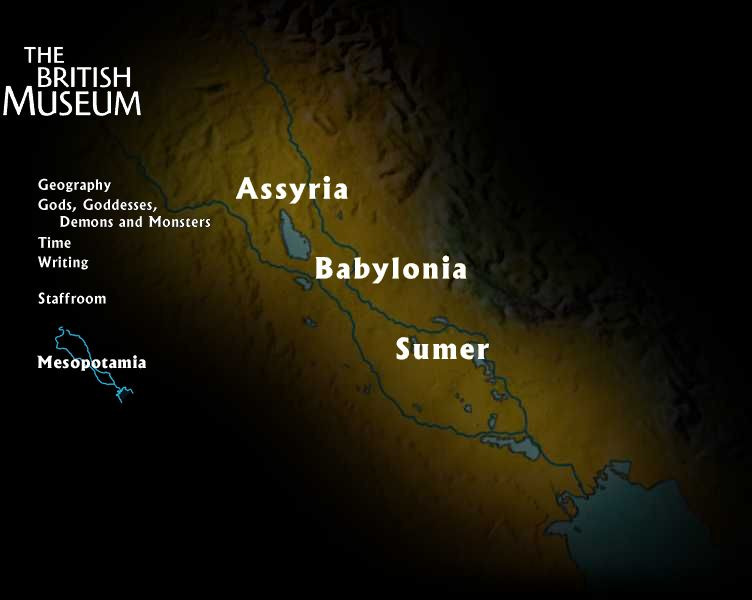Hi, what do you want to do?
E-learning for Kids
E Learning for Kids: Science: Madagascar: What Is the Solar System?
Patrick loves being a pirate, but he'd prefer to be an astronomer. Join him, and learn about everything high in the sky like the moon, stars, and asteroids.
Wikimedia
Wikipedia: Ptolemy
A biography on Ptolemy, a Greek astronomer, discusses his two most famous works, "Almagest" and "Geographia." Other books he wrote are also listed.
TED Talks
Ted: Ted Ed: How Do We Study the Stars?
Yuan-Sen Ting takes us into deep space to show how astronomers study the stars beyond our reach. [4:46]
TED Talks
Ted: Ted Ed: What Light Can Teach Us About the Universe
Pete Edwards outlines the six unique messages that light carries which, when put together, disclose a stunning amount of information to astronomers about the universe. [4:07]
Space Telescope Science Institute
Space Telescope Science Institute
The homepage for the Space Telescope Science Institute provides a variety of resources on the James Webb Space Telescope and Hubble Telescope. Also provided is information on the institute itself, a data archive, and a wide range of...
PBS
Pbs: Find the Planets
Find out how astronomers locate new planets by observing the traits of the stars they orbit. Get some tips at locating stars with the help of star maps.
Space Telescope Science Institute
Space Telescope Science Institute: Hubble Space Telescope
Find out how astronomers are conducting extensive observations to estimate how many planets in our Milky Way galaxy might be potential abodes for life.
Other
Radio Sky Publishing: Site for Amateur Radio Astronomy
Site describes multiple resources for the beginner amateur radio astronomer. Great general information for beginners on basic radio physics and on the fundamentals of radio telescopes. Nice set of links to other useful sites.
Other
Kitt Peak National Observatory
Homepage of Kitt Peak National Observatory (KPNO) which is the one of the premier astronomical observatory used by professional astronomers in the United States. Although the site is mostly geared toward the professional, the Kitt Peak...
Other
The British Museum: Mesopotamia
This beautifully crafted site on Mesopotamia has selected information on Assyrian palaces and warfare, Babylonian astronomers, trade and transport and Sumer, Royal Tombs of Ur and Ziggurats.
Other
Hubble Heritage Project
The Hubble Space Telescope (HST) has been used to accumulate images of a "cosmic zoo" of celestial objects. The Hubble Heritage Project uses these images for extending human vision for both scientists and the public. This site has links...
Institute and Museum of the History of Science
Museo Galileo: Multimedia: Video: Astronomical Use of the Plane Astrolabe
Invented in ancient Egypt, the plane astrolabe is a tool used by astronomers and navigators to determine time and identifying positions of the Sun, Moon, stars, and planets. Read text or view the video to understand the details of its...
National High Magnetic Field Laboratory
Magnet Academy: Anders Celsius
Anders Celsius is most familiar as the inventor of the temperature scale that bears his name. The Swedish astronomer, however, also is notable as the first person to make a connection between the radiant atmospheric phenomenon known as...
Smithsonian Institution
National Air and Space Museum: Exploring the Planets: Ancient Times & the Greeks
In ancient times only five planets were known: Mercury, Venus, Mars, Jupiter, and Saturn. Learn about Greek astronomer Ptolemy's theory for the solar system that was to survive for fourteen centuries.
Famous Scientists
Famous Scientists: Anders Celsius
Learn about the life and work of Anders Celsius, the Swedish astronomer who proposed the Celsius temperature scale which bears his name.
Famous Scientists
Famous Scientists: Aristarchus
Find out about the ancient Greek astronomer and mathematician who presented the first known model that placed the Sun at the center of the known universe with the Earth revolving around it.
Famous Scientists
Famous Scientists: Thabit Ibn Qurra
Learn about the life and work of Thabit ibn Qurra, a mathematician, physician, astronomer, and translator of the Islamic Golden Age.
Famous Scientists
Famous Scientists: Thales
Read a short biography about Thales, a pre-Socratic Greek philosopher, mathematician, and astronomer.
University of St. Andrews (UK)
University of St. Andrews: Zu Chongzhi
The University of St. Andrews offers a biography of Zu Chongzhi, a Chinese astronomer and mathematician.
University of St. Andrews (UK)
University of St. Andrews: Brahmagupta
Brahmagupta was a mathematician and an astronomer. He is responsible for the addition and multiplication properties of zero.
Space Telescope Science Institute
Hubble Site: Hubble Monitors Weather
This site is from Hubblesite which is provided by the National Aeronautics and Space Administration. "What's the weather for Mars and Venus? The Hubble telescope has given astronomers a peak." Site provides images, video as well as...
Famous Scientists
Famous Scientists: Al Battani
Find out about Al-Battani, Arab astronomer, astrologer, and mathematician who introduced a number of trigonometric relations.
Other
Ellinogermaniki Agogi: Eratosthenes Experiment
A profile of the ancient Greek mathematician, geographer, and astronomer, Eratosthenes. Looks at his many accomplishments, including measuring the circumference of the Earth and the distance to the Moon and the Sun. Includes links to...
NASA
Nasa: Imagine the Universe: Gamma Rays From Supernovae and Supernova Remnants
Astronomers use gamma decay to study the lives of the stars.
Other popular searches
- Famous Astronomers
- Early Astronomers
- Major Astronomers
- Ancient Astronomers
- Greek Astronomers
- Report on Astronomers
- Astronomers Measure Distance
- Women Astronomers
- Female Astronomers
- Fumes Astronomers
- Five Early Astronomers
- Famous Astronomers Quizes






















